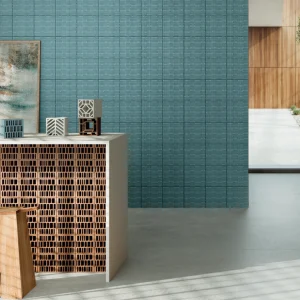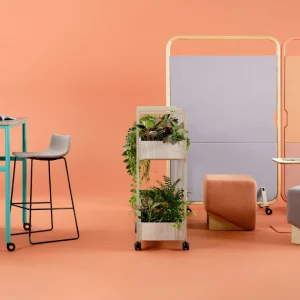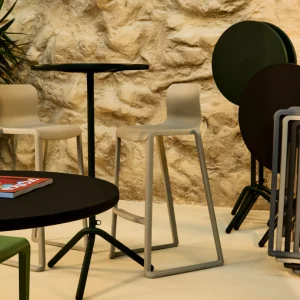
Walking into the Power of Making at the V&A comes as a bit of a shock. The place is stuffed to the gills with an eclectic range of objects, from a crocheted, full-size bear and a cake that looks like a real baby to a prosthetic leg and a Fabrican spray-on dress. The walls are hung like a Royal Academy summer show, with objects cascading down the verticals.
It’s certainly no calm, white gallery space, more a Kunstkammer, a cabinet of curiosities: exactly what curator Daniel Charny had in mind. Charny, a senior tutor in design products at the Royal College of Art and curator at the Aram Gallery is also a co-founder of creative consultancy From Now On. He wasn’t about to provide a quiet trawl through the icons of contemporary craft when he took on the Crafts Councils’ triennial show at the V&A. He researched the origins of both institutions and his brief to himself was to examine contemporary attitudes to skills and making. Making, he concluded, is universal, but despite renewed interest, skills are being lost.
The show is political, raising ideas about alienation from the means of production and about commercialisation and globalisation. ‘People don’t know how things are made,’ Charny declares. ‘They no longer say “I want this; I can make it,” but rather “I need this; I will buy it.” They have lost the habit of making.’ Yet the exhibition is predicated on his belief that making is what makes us human and if, as he does, you know where to look, that making is ubiquitous. Making, he contends, is found at all levels of society, from those who make to survive to those who make to think; from those who work with traditional skills to those who use computer technology, and from those who work alone to others who collaborate. Making is the prerogative both of the professional and the amateur.
The link between the show’s 100-plus objects is that the makers understand their materials and processes and that their pieces are ingenious, made meticulously and with passion. Makers learn by doing; getting better with practice. Charny believes that this underlies modern life, empowering engineering, fine art and design. Hence the inclusion of a dry stone wall by Andrew Loudon near a prosthetic suit for Stephen Hawking by Michael T Rea.

‘Making is not an execution, it is an imaginative use of skills: making as thinking,’ says Charny. Witness a nylon filament ring by Nora Fok next to Peter Butcher’s machine embroidered, snowflake-shaped surgical implant, which provides multiple attachment points for tissue replacement and the way this leads on to the glass nose moulds made by Matt Durran and used to fashion engineered tissue that is eventaully transplanted on to the faces of disease victims.
The show doesn’t shy away from new technologies, updating notions of crafting and placing considerable emphasis on the use of 3D printing and open sourcing, where knowledge is swapped through the exchange of data, instructions for ‘hacking’ objects, or blueprints. A classic example is Mike Sheldrake’s surfboard kit, a list of instructions and templates made up by Tim Mason.
The show deals with traditional and ethnic crafts and the conscious use of tradition by makers to create identity. It also examines the subversion of materials and iconographies, as in chef Jacquy Pfeiffer’s spun-sugar sculptures and Michael Eden’s Wedgwood-like urns made by computer-aided drawing and additive layer manufacturing.
The exhibition also includes a ‘tinker corner’ for the occasional workshop and a selection of films about making. Many of the films showed pretty hideous objects being created, yet the area was crammed with spectators who seemed spellbound by the act of making. The Power of Making clearly resonates with visitors, despite the confusing and somewhat overpowering layout of the show. People need to read the labels but getting close enough is difficult. Sadly, there no touching allowed. Surely, the V&A could have found a way to make at least some of the objects available for handling? The real power of making is in touching and experiencing.
While big names are included in the show, it isn’t an apology for design/art/craft. Ego isn’t the essence of making, but many within the Crafts Council’s purview may resent their rare opportunity to be shown at the V&A being usurped by designers and engineers. However, Charny presents a powerful case for making that can only boost the sector and spur the public to rethink the idea that working with one’s hands is a sub-intellectual activity. They may even be inspired to make.





